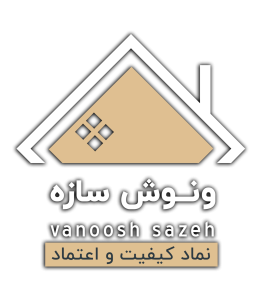A Drupal 8 module is a package of code that extends the functionality of the Drupal core platform. The CMS supports translating configuration objects into different languages. The site administrators create multilingual sites using the configuration translation module. It has a strong presence in the government and education sectors and many Fortune 500 companies.
- They can do it by reporting or resolving existing issues in the projects, maintaining a theme, module, or distribution, to name a few.
- It includes thousands of modules and themes to attract web audiences, grow brand awareness and build a community.
- The lowest-rank meetings include local meetups, sprints and workshops aimed mainly at developers who are just starting out with Drupal.
- With DXPR, marketers can build what they want when they want with absolutely no code.
- Roles have default permissions, but Drupal allows us to modify them and create new custom user roles.
- Among them is the activity tracker that allows us to monitor the activities of users who have accessed the site.
- Security Team is a team of security experts who make every effort to ensure Drupal’s security.
Drupal is built with SEO in mind, offering a range of features and modules that help improve your website’s search engine rankings. Clean URLs, customizable meta tags, and built-in XML sitemap generation are just a few examples of Drupal’s SEO-friendly capabilities. Drupal’s core provides built-in multilingual https://globalcloudteam.com/ support, allowing you to create and manage content in multiple languages. This makes it an excellent choice for organizations and businesses looking to target global audiences. Drupal powers over 1.7 million websites, with about 11% of the top 10,000 most visited websites built on Drupal.
What are Drupal’s key features?
When a module is enabled, it provides a set of features, e.g., node , taxonomy , book . It requires advanced knowledge and few basic things about the platform to install and modify. Drupal provides several templates for developing web applications. Drupal is designed to handle high levels of traffic and can scale up to accommodate the needs of growing websites. Its caching capabilities and performance optimization features help ensure that your website remains fast and responsive even during peak traffic periods.

Another of Drupal’s strengths is its open-source community with 1.37 million members and over a million active contributors. Several significant contribution events happen every year, and small groups with excellent communication skills are willing to help everyone. Drupal is mobile-friendly and allows mobile editing, making it easy to approve content from iPhone, Android devices, and tablets. Since this CMS platform differs from WordPress and Joomla, its main features are worth considering. Who receive our energizing newsletter every week, filled with only the best handpicked articles X-Teamers are reading about engineering, career growth and X-Team culture. The website built using Drupal will generate big server loads and never open with a slow internet connection.
Features of Drupal
A module is like a plugin that can be part of the Drupal core, i.e. constitute an integrated function in the CMS. Any content, such as pages, articles, and so on, is stored as a node. Let’s find out how this platform was created and how it has evolved up to date.
2022 Drupal Statistics, Users, Usage, WordPress VS. Drupal – Enterprise Apps Today
2022 Drupal Statistics, Users, Usage, WordPress VS. Drupal.
Posted: Thu, 27 Oct 2022 07:00:00 GMT [source]
Support for SEO and elegant, responsive design working on phones and tablets is another key advantage of this solution. Thanks to its versatility and easy content editing, this distro is quickly gaining popularity. Regardless of the most important elements that are the key focus areas for the majority of developers, every Drupal user can propose their own changes. If they gain approval and pass the development process, they can be deployed and thus improve the platform.
Search form
Drupal was created by open source developer Dries Buytaert while he was a student at University of Antwerp in Belgium. He released Drupal 1 in January 2001 as a single server owned CMS. At the time, it contained 18 core modules, each as a separate PHP file, with pre-loaded themes.

They typically have navigation menus and lists of content, content pages with nice URLs, a logo in the header, a footer with contact info, the ability to search content, etc. At the same time, each website has some components that make it unique. Websites often have their own custom information architecture, a unique set of content, a particular visual design, and sometimes customized features. Drupal provides more number of customizable themes, including several base themes which are used to design your own themes for developing web applications. It allows users to add new features and functionality to their Drupal website without writing all code from scratch.
Training for a Team
In January 2023, Drupal announced software updates to resolve four vulnerabilities in Drupal core and three plugins. Administrators of Drupal sites can be automatically notified of these new releases via the Update Status module or via the Update Manager . Drupal’s policy is to announce the nature of each security vulnerability once the fix is released. There are over 30 national communities around drupal.org offering language-specific support. The accessibility team is carrying on the work of identifying and resolving accessibility barriers and raising awareness within the community.
The developers know how to research, install and configure modules most appropriate for a particular project. They should also be able to build new modules as sometimes meeting customer requirements involves creating custom solutions from scratch. Drupal developers need to know how to do it using core hooks and module hooks. Drupal is highly extensible and modular, What is Drupal allowing developers to add functionality as needed through a wide range of available modules. With thousands of contributed modules and the option to create custom ones, Drupal enables you to build complex and feature-rich websites without the need for extensive custom coding. In addition to CMS functionalities, Drupal also includes web development functionalities.
How to become a Drupal developer?
Use these Drupal modules to make your website accessible to everyone. Drupal.org hosts Drupal’s GitLab repository, its issue queue, and its documentation. Before you start working on code, be sure to search the issue queue and create an issue if your aren’t able to find an existing issue. By adding my comment I declare that I have read the privacy policy and give my consent to the processing of data. In fact, updates often also contain security patches that fix any vulnerabilities that have been discovered by the community. Also, as with all CMSs the golden rule is to always keep the core and modules up to date.

If we wanted to compare this CMS to the most currently used, the comparison Drupal vs WordPress would lead us to lean towards WordPress due to its ease of use. However, one could be drawn towards Drupal for the possibility of deeper management and much control on the settings. Core modules also include the ability to manage the cron job text editors like CKEditor and the creation of a contact form. As we said, we can create a web site with Drupal and extend its functions through modules. We can manage them directly from the back-end where we will find a series of modules ready to be activated. The first version of Drupal was released in January 2001 to give everyone the opportunity to use the platform.
How has Drupal evolved?
Drupal provides more customizable themes, including several base themes to design your themes for developing web applications. With mobile web browsing on the rise, responsive design is essential for modern websites. Drupal makes it easy to create responsive websites that adapt to different screen sizes and devices, ensuring an optimal user experience for all visitors.



